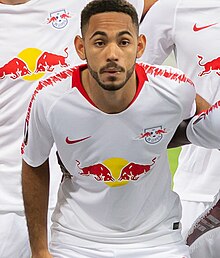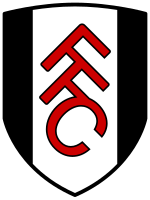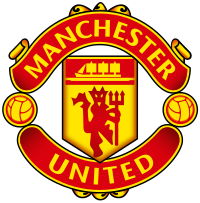Article body analysed
After alighting from his helicopter at Carrington last Thursday, Sir Jim Ratcliffe met with Ruben Amorim to discuss Manchester United’s rather mixed bag of results to start the new season. “(It was) just to show the support, explaining that it’s a long project, ” Amorim said the following day. “I spoke with him, Omar (Berrada) and Jason (Wilcox). Trying to see all the data around the team. A normal meeting, we’ve had several but in this moment, it’s normal for people to pay attention to that. ” Advertisement Nothing special, he insisted — except Amorim’s mention of data was intriguing, echoing noises emanating from Old Trafford last week that suggested, despite the side’s struggles, members of the hierarchy have noted signs of progress in the underlying performances. Amorim has referenced the data several times himself. “We are playing well until we reach the boxes. We need to be more clinical, ” he added last Friday. “If you see the number of shots, the x G, all these things are good. ” He is right, the early attacking metrics have been eye-catching. No other Premier League side can match United’s 15. 8 shots and 1. 9 expected goals (x G) per game. That league-leading x G figure has been inflated by two penalties — Bruno Fernandes missing the first against Fulham, scoring the second against Burnley. Only Brighton & Hove Albion have been awarded more than United in the opening five games. But United’s non-penalty x G is also strong, the second-highest behind Manchester City. Other data points, including passes into and touches inside the penalty area, are trending in the right direction too. Defensively, 46 shots conceded is the fifth-best record in the league. The days of allowing Brentford to have 31 attempts at goal, as Erik ten Hag’s United once did, appear long gone. Until this Saturday, at least. This is all despite Amorim facing the most difficult five-game start of any Premier League manager, according to Opta’s fixture difficulty calculator. That figure of five games also has to be part of the consideration when assessing the data behind United’s start: it has been only five games. In such a small sample, single matches and events can skew totals and averages. Among the signal, there remains a lot of noise. For example, as challenging as their opening fixtures may have been, United have played one of the more favourable engagements in the calendar by facing promoted Burnley at home. A third of their non-penalty x G total came that day. Advertisement Red cards also distort the data. In the 1-0 win against Chelsea, United racked up a further 1. 3 non-penalty x G during the 45 minutes between Robert Sanchez and Casemiro’s sendings off, while Amorim’s side were a man up. Sanchez’s red card did not happen in a vacuum. It was a direct product of United’s aggressive start and cannot be dismissed as a stroke of fortune. Saturday was also the first time this term that United have led for more than half an hour. Only four Premier League sides have spent more time trailing. The onus has often been on Amoim’s side to chase the game, which can naturally lead to more shots, more x G and more attention-grabbing attacking data. While a five-game sample is not totally insignificant, it is too small for these contextual points to be ignored when assessing the picture so far. And on the flip side, context also has to be applied to the less favourable data points regarding United’s start. As Amorim mentioned, United’s finishing has been poor. Shot conversion and x G underperformance have seen no improvement from last season, although the hope would be that they stabilise as the sample size grows. And although United have done well to limit their opponents’ number of shots, the average x G of those attempts has been 0. 16 — the highest in the league at this early stage. United may not have given up a lot of chances, but when they have, they have often given up good ones, contributing to Amorim’s side having conceded a total of 7. 3 x G, the sixth-worst record. But a considerable chunk of that figure is made up by the very first shot United conceded this season: Riccardo Calafiori’s decisive 13th-minute header in the 1-0 defeat against Arsenal. Turned in on the line after Altay Bayindir’s failure to claim a corner, it had an x G of 0. 91. Then, this month, after doubling City’s lead in the derby, Erling Haaland rounded Bayindir and bore down on what was practically an open goal. Matthijs de Ligt’s attempt to slide and block was enough of a distraction to see Haaland fire against the upright, missing a 0. 93-rated chance. Advertisement Alongside an opportunity missed by Ismaila Sarr in the opening minutes of Crystal Palace’s 3-0 win at Aston Villa last month, Calafiori and Haaland’s chances are the two highest-x G shots of the Premier League season so far, skewing United’s data considerably. Are United susceptible to conceding a small number of high-quality opportunities that spoil their efforts to keep a clean sheet? Or has their defence been largely solid except for a handful of isolated incidents that are unlikely to keep happening? You could argue either way, and will be able to do so until more games provide more data and with it, more meaningful insights. The same applies to more stylistic rather than performance-based data points, even though there are potential trends to watch closely over the coming weeks on that front. United took more touches in their own defensive third than any other top-flight side last season, averaging around 226 per game, but they were not especially comfortable on the ball when that deep. Only Southampton and Tottenham Hotspur lost possession in that part of the pitch more often. Compare that to the first five games this term: Amorim’s side have only lost the ball in their own defensive third 11 times — the fewest of any side. So are United suddenly much better at keeping the ball close to their own goal? Maybe, or maybe Amorim has realised you cannot lose possession in your own third if you do not have possession in your own third. From having the most touches that deep in their own territory last year, United currently have the third-fewest. This is supported by the eye test. United appear to be spending less time trying — and often struggling — to build up attacks from deep, and are instead playing more directly into or through midfield, supplying a faster, more physical forward line. Advertisement There has consequently been an increase in the number of long balls United are attempting to play, up from a league-average last season to the second-most. Think Bayindir’s punt downfield in the move that led to Sanchez’s red card, or his route one pass that put Matheus Cunha through one-on-one at Fulham. The speed of play has ticked up considerably too, from the fifth-slowest to the sixth-fastest. Yet even those figures are significantly influenced by the standard of opposition faced. Would United have played as much fast, transitional football if their fixture list had not pitted them against three of last season’s top four? Playing quickly over an effective press like Arsenal’s, or in behind a high defensive line like City’s, makes a good deal of sense, but there is unlikely to be as much space to penetrate at the Gtech Community Stadium this weekend, or when Sunderland visit Old Trafford before the international break. United have already proven themselves capable of dismantling a low block when dispatching Burnley, and dominated 10-man Chelsea when they retreated into their shell during Saturday’s first half, but that amounts to about a game and a half of football in a five-match sample. Another five games will tell us more. It is still too early to draw definitive conclusions. What is certain, though, after last week’s meeting is that Ratcliffe and other senior Old Trafford figures are clearly keeping one eye on the numbers. As we approach the stage of the season where signal begins to emerge through the noise, Amorim’s task must be to sustain United’s more positive data points, then translate them into consistent results. (Top photo: Alex Livesey/Getty Images) Spot the pattern. Connect the terms Find the hidden link between sports terms Play today's puzzle Mark Critchley is a football writer for The Athletic, covering Manchester United and Manchester City. Mark joined after five years as The Independent's northern football correspondent. Follow Mark on Twitter @mjcritchley


